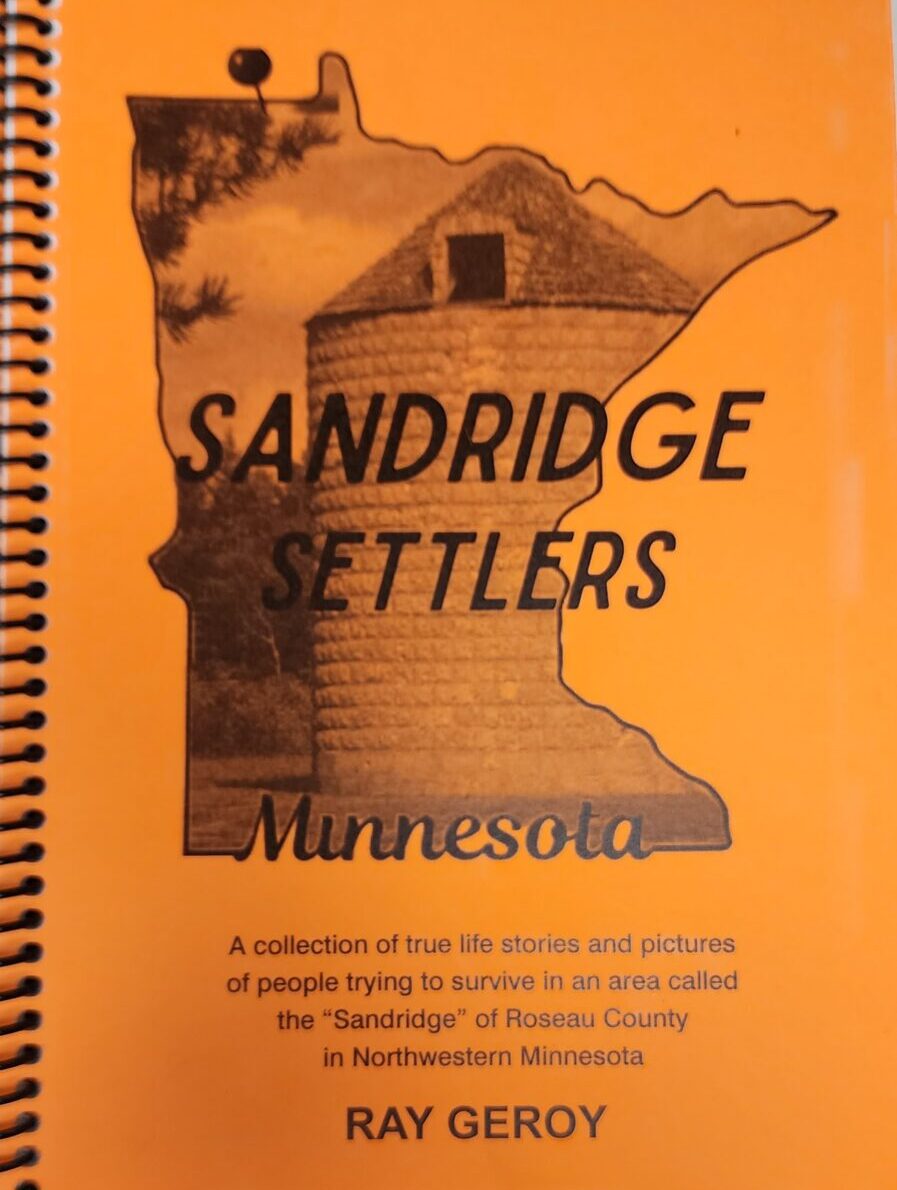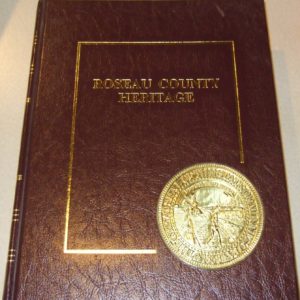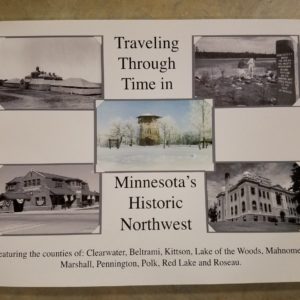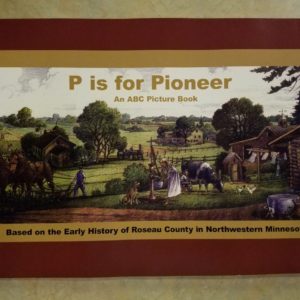Suggested Price: $20.00
Available on backorder
Description
The book Sandridge Settlers by Ray Geroy has been reprinted by the Geroy family. The museum has a few in stock.
This tells the stories of the people of the “Sandridge” now part of Beltrami Island State Forest. The stories of the families run roughly from 1900 to 1935. This book has stories/memories of the “good old days” where the settlers worked hard to accomplish their goals. 86 pages.
Prologue
While the location and the time of the story herein are of prime importance, there is another factor, without which there would be no story. Therefore the chapters of this book are named after the individuals who lived in this grand land – although it was not grand at the beginning.
As is the case in any good book, the characters are, after all, the thing that makes or breaks a story. In fiction, there are usually the hero, villain, and the many others who round out the story. In the case of a true story, the cast differs in that they are the people that lived in the land.
In our story, the cast is the settler and he is the hero!
The land of the “Sandridge” of which we speak begins very nearly at a cemetery, called Pine Grove, somewhat near the southeast corner of Roseau County. here the land becomes pure sand, and the lowly Jack Pine tree begins to flourish in its natural habit. Less than one half mile to the north or east runs the east branch of the winding spring fed Roseau River.
Townships involved are Beaver, Reine, Elkwook, and an unorganized one north of Elkwood. Mention is made of people in other parts of Roseau County including Roseau.
From the Pine Grove Cemetery, the Sandridge comprises a vast territory to the east and southeast, but the story of much of the land, will have to be told by another author at another time. This writer does not claim to be able to write a detailed story of even the four townships involved. It may be too late! If it had been written 20 years sooner, as it should have been, then on one would have been left out of the telling of the Sandridge story. This is a sad but true fact of life. “Too little and too late” may describe the Sandridge story.
The early settlers who lived in this section of the country very probably did not realize that they were living in a land that was destined to become unique, even though it was then called the Sandridge. In a letter to Jennie Geroy about 1920, one of her school chums from Warroad tells how they had “gone to the Sandridge” over the weekend. This writer, having lived there as early as 1916, remembers well that this land was always called by that name throughout the ensuing years. Even today, remnants of the ridge call it by this name.
Roughly speaking, the time the Sandridge story runs from 1900 to 1935.
The dawn of the twentieth century saw a tiny trickle of immigrants into this land. It was largely uninhabited with only little sign of the Indian, trapper, and the voyageur and their earlier pursuits. But they were gone and there was no answer to their disappearance. Possibly fires had driven them out!
The first settlers glimpse of this promised land must have been a depressing one for it was mostly brush and woods. Forest fires had depleted much of this land in 1910, but the pine was set to come back and it did. The east branch of the Roseau River lured many pioneers to its beautiful banks. Here were fish and fur bearing animals of all kinds. Here the deer and other game came to drink of the river spring fed waters. The people who had the foresight to settle along the rivers narrow valley did the best for here was moisture and better water and drainage.
Other people took homesteads near swamps and on ridges away from the river. This was a harder lot for they had poorer land which never became good farms. Mainly the land was good for raising cattle. Only some of the immigrants brought horses, cattle, and sheep. They made the best living! They also worked the hardest for the cattle not only had to fed and housed, they had to be protected from the wolves which were always hungry and vicious. Corrals had to be built for keeping them out.
Besides the farmers, then, the land lured hunters and trappers by the score. Many of them became farmers later.
The land did not call but few businessmen, although some of the settlers became obsessed with the need of stores, post offices, sawmills, etc. These men did their fair share in developing the community and therefore the land. Some of them made money, but they were few and far between.
Everyone made a living. No one starved. By dint of hard work and good management, which included large gardens, a few cows, and a good gun, they ate well. As today, the times included a few of the misfits who even today do not make a living, but they were a minority who were taken care of by others.
When asked if they would go back to those times, the few settlers living today said, “no, I wouldn’t. We had some good times, but generally, things were tough and hard to take.” There were a few who said they would go back, but the main reason was to be young again. they did get to be landowners for very little cost, but the land was often so poor as to be almost worthless.
There were of course, a few people who did not own land on the Sandridge. They squatted, simply stayed on with relatives. There was a lot of doubling up of the land with old parents living close to their sons or daughters. Then there was the practice of settling in four corners of four different homesteads which almost the effect of establishing a small village. River was a good example of this policy. Here the Trachs, Hammers, Vaads, and Gustafsons made up a small community that survived for many years. Winner did likewise.
Post offices, schools, and stores sprang up here and there depending on the need for them. There was much moving about of these establishments due to the shifts in population – especially the schools. Often one family moving into a locality was reason enough to move the school a short way. Post offices and stores did the same. Sawmills started up where there was timber and shut down when it as depleted. Farms did not seem to change hands much, but a few people did move away after selling out.
As the farms were taken, many of the swamps were homesteaded.
It now appears that Arthur and Nina Clark were the first settlers on the land which we must call the “Sandridge”. they came in 1901.
Families included in this book:
| Anderson, | Knute |
| Bottom, | Ole and Gina |
| Church, | Eva, Ida, and Clara |
| Clark, | Arthur and Nina |
| Cole, | George and Henrietta |
| Dacy, | Mike and family |
| Davidson, | John and Clara |
| Eikeland, | Ole and Rubina |
| Espe, | Lorentz and Beret |
| Fevold, | Chris and Signe |
| Geroy, | William and Mary |
| Greear, | Janie Tobin |
| Grundfor, | John, Heglund, and Isaac |
| Gustafson, | Gustaff and Hannah |
| Halgrimson | Family |
| Hammer, | Palmer |
| Hammer, | Gunder and Marit |
| Hanson, | Carl and Caroline |
| Hanson, | Nels and Mary |
| Hayes, | Albert and Bessie |
| Hendershot, | Alva and Signe |
| Houglum, | Bendick and Clara |
| Johnson, | Johnny and Christine |
| Johnson, | Blacksmith |
| Kihlstadius, | Ed and Clara |
| Lehmann, | Herman and Sylvia |
| Loken, | Tom and Clara |
| Meyers, | John and Mary |
| Moe, | Albert and Gunne |
| Moen, | Ole and Gina |
| Morehouse, | John and Clara |
| Nyheim, | Carl and Eliza |
| Olmstead, | Harry and Mary |
| Orvis, | Ray and Mary |
| Rice, | Florence, Mable, and Violet |
| Sannan, | John and Belle |
| Simonson, | Fred and Augusta |
| Solberg, | Gilbert and Antonette |
| Stevenson, | John |
| Stotts, | Caroline |
| Teague, | Royce and Mary |
| Thompson, | Tom and Olena |
| Thompson, | Ralph and Hannah |
| Tobin, | James and Lucy |
| Trach, | Frank and Maude |
| Trach, | Julius and Liona |
| Trach, | Will and Edith |
| Vytlacil, | Fred and Olive |
| Weaver, | Charles and Rose |
| Weaver, | John and Edna |
| Webb, | Chester |
| Weideman, | Bert and Elmer |
This book can be purchased online or in the Roseau County Museum located in the City Center.
Cost $15
An additional $5.00 is included in the online price to cover shipping charges.
Membership discount doesn’t not apply to this book.




